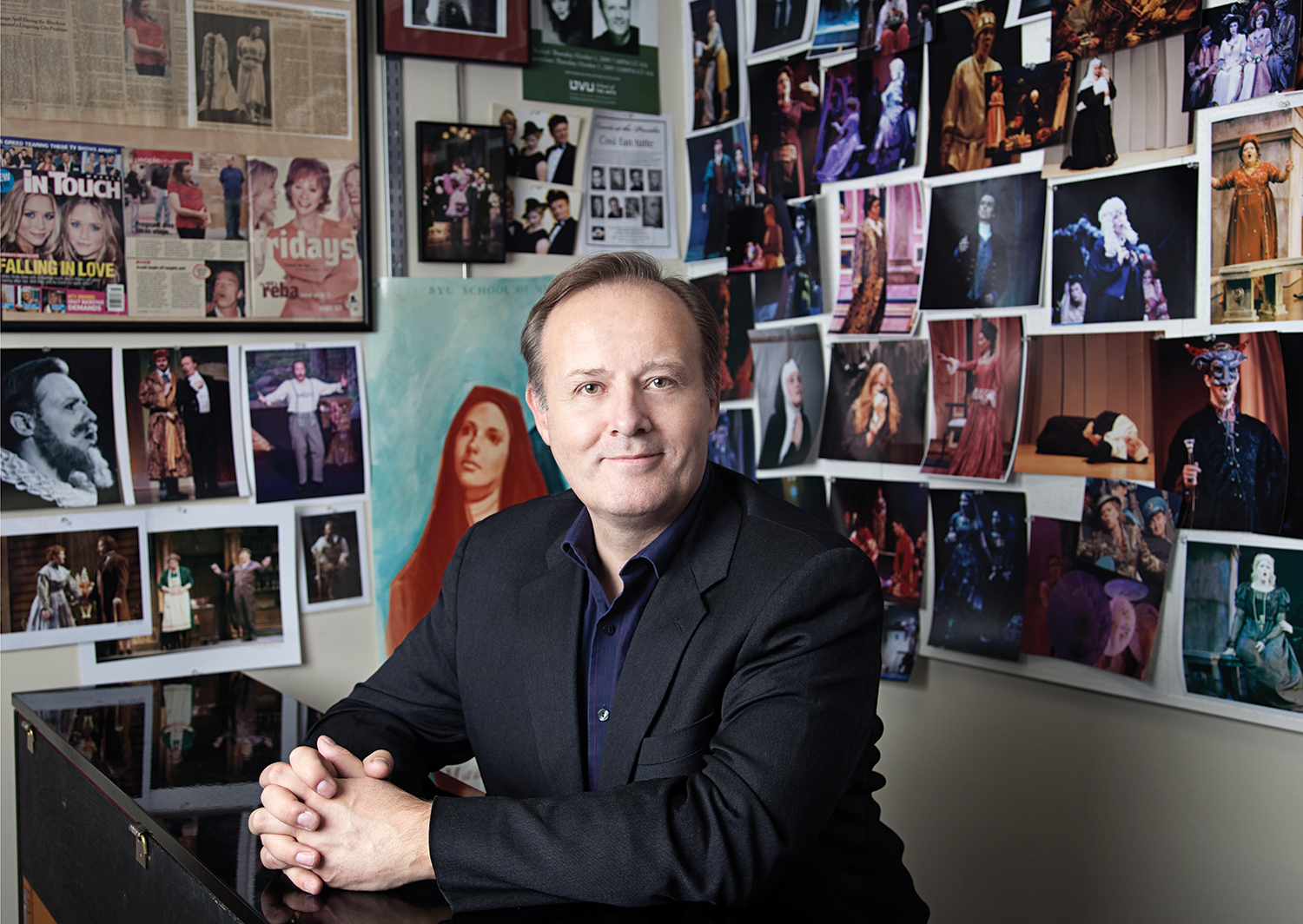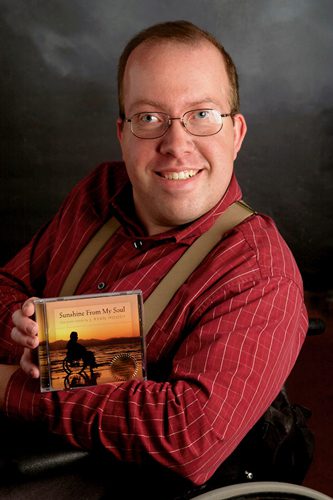Last spring students took turns at a mic in BYU’s Gallery 303, testing Jeremy M. Bowen’s (BFA ’08) BFA final project, Flux. Huffing, singing, and blurting out sounds, they watched their voices transform into colored light on a Mac screen. Music professor Michael D. Hicks (BA ’80) sang “The Lion Sleeps Tonight” and got some nice shade-shifting.
His “a-wimowehs” brought reds and yellows; the high “a-we-de-de-de,” blues and violets. Flux translated the sound frequencies simultaneously into light frequencies.
“The spectrum of sound is stretched over the spectrum of light,” explains Bowen, who spent eight months writing the program, assigning the lowest frequency humans can hear, 20 hertz, to the shortest wavelength the eye can see, 380 nanometers. The upper audible extreme, 20,000 hertz, is likewise assigned to the extreme of visible light, 780 nanometers.
Bowen found inspiration in the color-sound correspondence theories of Richard Wagner, Alexander Skriabin, and other romantic-era composers.
“Skriabin included a part in one of his scores for a light-projection machine that would flood the hall with different colors throughout the piece,” says Bowen, who composed a piece himself for the Flux exhibition. Viewers heard Bowen’s song through headphones while watching it pulse in color on a wall-size screen. After seeing the exhibit, a BYU music composition student, whose wife is deaf, approached Bowen, hoping to use Flux to translate his music into a visual form for her.
Download Flux at www.jmbowen.net/flux. The program is free, but donations are encouraged.










